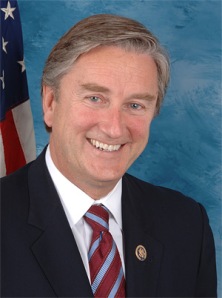Political scientists are nothing if not devotees of deductive reasoning. We take bits of historical data, add in opinion research data and form hypotheses about the possible range of outcomes in an election. This year that fairly straightforward deductive process seems to be a bit more challenging than in many past years. This is true because one of the underlying theses upon which so many assumptions would otherwise be built may, in fact, be less dependable than before. This anomaly lies at the foundation upon which so many predictive models have been built in years past and may make the business of predicting the outcomes of this year’s Congressional elections more challenging than it has been in recent years.
Pollsters, who provide us with most of the opinion research data that is used in modern political campaigning, have developed their own historical models for predicting voter turnout. They base these models on historical trends, demographic data, voter registration data and other factors to construct “likely voter” models that they can use to get closer to the likely actual result on Election Day. So they hope.
This year’s volatile political climate seems palpably different to those of us who have been out on the campaign trail observing the ups and downs of various campaigns and more importantly trying to gauge the level of intensity of the electorate regarding their desire to participate in this election.
Voter participation trends had been in a state of decline for several decades until the start of this century. Just as the 2008 presidential election year saw some rather profound changes in recent voter history with high levels of voter turnout among African-Americans and young people compared to previous elections, this year we may see some different trends, which make predicting Tuesday night’s outcome very difficult.
This year’s intensity numbers and primary turnout raw vote totals might suggest the potential for a dramatic swing away from a good number of incumbents that would not normally be detected using typical historical models.
The survey data that is currently publicly available would suggest that the GOP is likely to pick up enough seats to secure a House majority but fall short of the number necessary to do so in the Senate. As we wrote in Wednesday’s PRIsm Information Network Election Analysis Report, “Extrapolating the final trends, it appears that Republicans are likely to see a net gain exceeding 43 seats, thus giving them a new House majority. Landing somewhere between the 221-226 range is likely where the GOP will end election night, if these final readings are correct. Volatility, however, still remains.”
Our important disclaimer here is that our extrapolation is just that, a projection of past and current trends less than a week into the future. One of the hazards of this is that the turnout model used by every pollster, pundit and political scientist in the country might be wrong this year. If one takes into account the fact that raw vote totals in this summer’s Michigan Republican primary were slightly more than twice the raw vote totals for the commensurate Michigan Democratic primary, one could make the case for a greatly altered turnout model which, when applied nationwide, might suggest far more seats for the House Republicans than any conventional voter turnout model might suggest.
This is how some prognosticators get from our very conservative suggestion of a 43+ seat GOP net gain to over 60 as suggested by those who have extrapolated primary turnout numbers for next Tuesday’s general election. Unfortunately, the science of gauging voter intensity and translating that into a reliable voter turnout model is still in its infancy. While the current data analysis supports a 43-48 seat GOP net gain in the House, a 2- to 5-point swing in those turnout numbers could exceed this result by a substantial amount.

